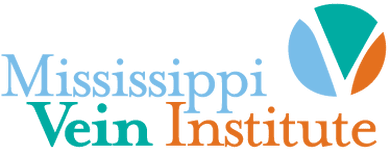Vulvar Varicosities Treatment
in Jackson & Madison MS
Vulvar Varicosities Treatment

Vulvar varicosities, also known as vaginal or vulvar varicosities, are rare. However, they can be extremely painful and negatively impact how a woman sees her body after pregnancy. At MS Vein’s Vulvar Veins Treatment Center, we are highly experienced in successfully treating vulvar varicosities with sclerotherapy.
If you have any worries about vulvar or vaginal varicose veins, you may visit our Vulvar Veins Treatment Center to help you learn about the treatments available to you.
Causes of Vulvar Varicosities
Most of the women who experience vulvar varicosities are due to a pregnancy. Women have a higher risk for vulvar varicose when experiencing multiple pregnancies.
This is due to the increase in hormones during pregnancy and the associated increase in blood volume in the pelvic region, causing veins to swell and enlarge. The veins on just one side of the vulva or vagina are usually affected, and childbirth typically causes those veins to go away.
There is no clear way to determine if vulvar varicose veins disappear after childbirth. If any persist, MS Vein can use our tried-and-tested varicose vein treatment approaches to manage them.
Treatment of Vulvar Varicosities
We usually recommend our patients wait for a minimum of one or two months following childbirth before undergoing treatment for vaginal or vulvar varicose veins. This is to give the body time to recover and see if they have cleared away or are no longer causing pain. But if the varicosities are causing severe pain and discomfort, we can start treatment shortly after childbirth.
Sclerotherapy medication is injected into the veins, making them shrink and sending blood to other blood vessels. Constriction makes the veins less apparent and will clear up as your body recovers.
The treatment can be painful but only during the injection stages. Other usual after-effects include tenderness and bruising.
All the medications used are approved and certified by the FDA and produce no adverse interactions with other drugs. However, we strongly suggest that women pump their breastmilk and dispose of it in the 24 to 36 hours following the procedure as an added precaution.
Vein Therapy for Vulvar Varicosities
Most women luckily never experience vaginal or vulvar varicose veins, and those who are at high risk are almost always those who were pregnant multiple times. Vulvar varicosities tend to occur on one side of the vulva only and rarely on both sides.
Vulvar varicosities do not always show symptoms. The most-reported include feelings of fullness or pressure in the vulvar area, vulvar inflammation, and accompanying discomfort. The swollen vessels can bulge, appear bluish, and feel bumpy in severe cases. Extended periods of standing, walking, and sex can exacerbate the condition.
Child delivery seems to be the only instance wherein these varicose veins go away spontaneously, but it is still hard to tell if they will disappear.
We offer a few recommendations for you to consider before undergoing treatment:
- You can wait a month, even two, following childbirth to see if the varicose veins have resolved by themselves or if you are not in pain anymore.
- If the varicose veins persist a month or two post-delivery, it may be a good time for a consultation
- If there is extreme discomfort and pain, we can start treatment quickly after delivery.
- With breastfeeding mothers, we always advise being as cautious as we can be. The milk that has been made while you were undergoing treatment may be fine, but we recommend that you pump the milk and dump it for 24 to 48 hours following vaginal or vulvar varicose vein therapy.
Book An Appointment for Vulvar Varicosities Treatment
If you suffer from vulvar varicosities, call us to learn more about what steps you can take to manage them during your pregnancy. You can also talk to us about possible treatment.



